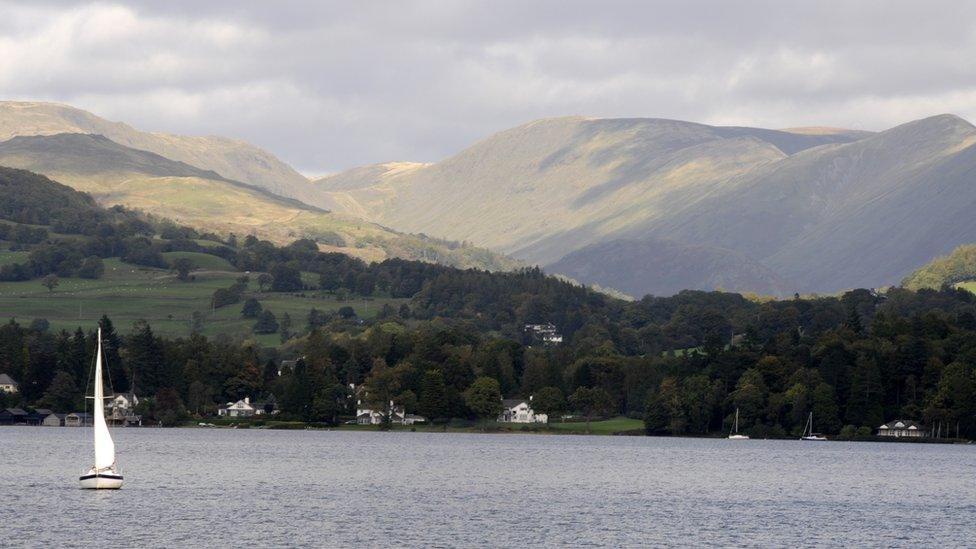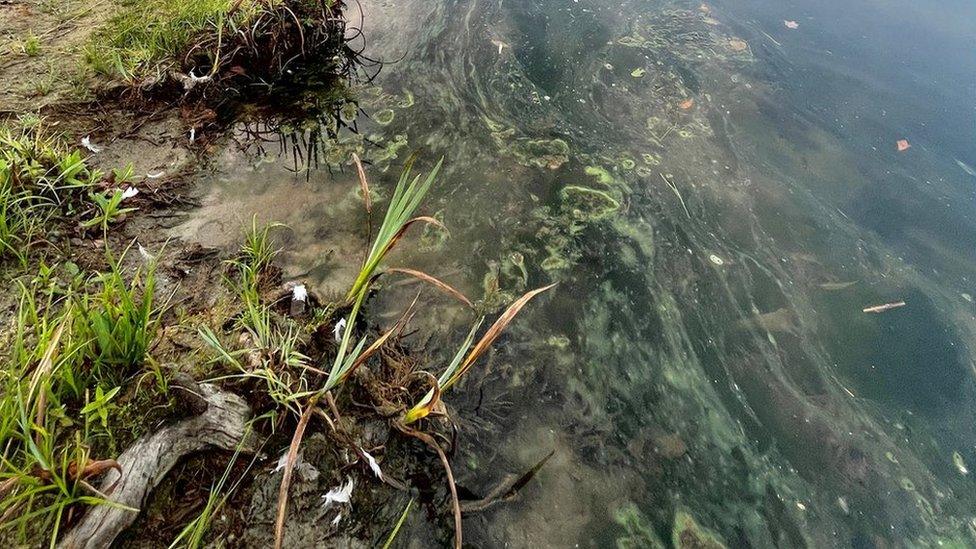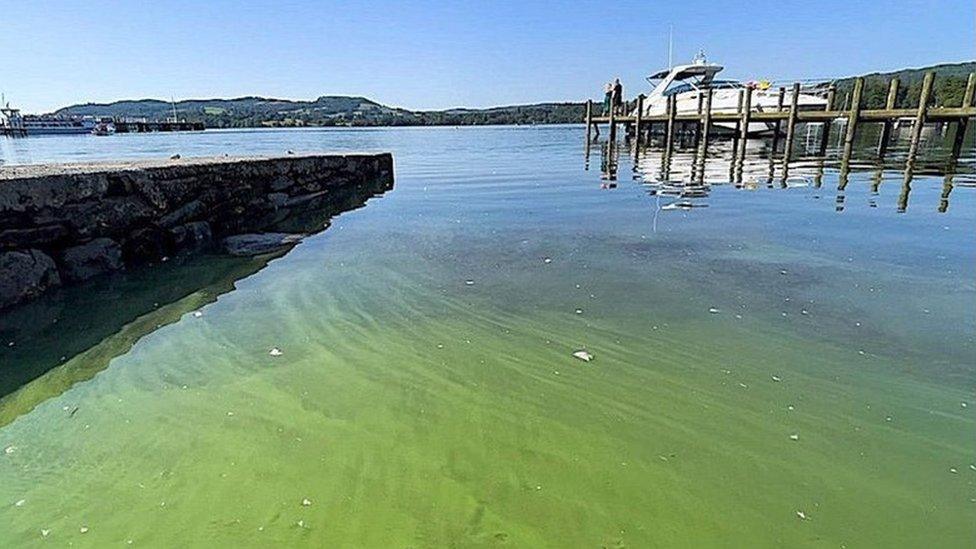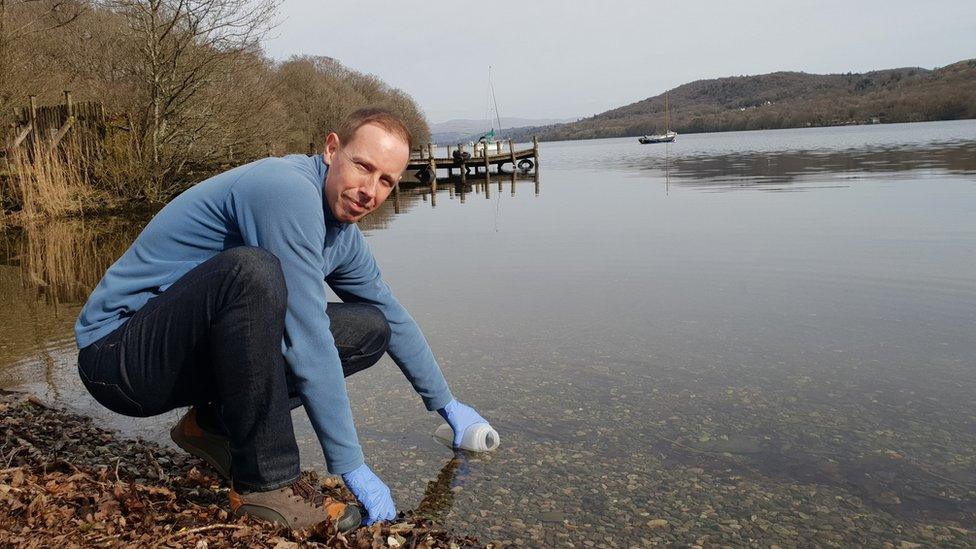Survey reveals increased pollutants at Windermere
- Published

The Big Windermere Survey studies the lake's water quality and is in its second year
Increased pollution has been found in England's largest natural lake.
Samples from the shoreline of Windermere, and rivers and lakes in its catchment, revealed higher levels of phosphorus in August compared to 2022.
Just 3% of samples collected from the lake's shoreline met minimum standards under UK legislation, external, scientists said. In June 2022 it was 58%.
The Love Windermere Partnership said it was determined to "drive the change necessary" to improve the lake.
More than 300 volunteers have joined the five Big Windermere Surveys since the project's launch last year.
The survey, which is led by Lancaster University and the Freshwater Biological Association, conducts a one-day snapshot of conditions every season.
Scientists said the higher phosphorus concentrations found in August 2023 were "potentially significant for the ecology of the lake, with phosphorus being one factor linked to the growth of algae within Windermere".
A total of 3% of samples collected from the lake's shoreline contained sufficiently low concentrations of phosphorus to meet default standards for high or good status under UK legislation.

Phosphorus is one factor that is being linked to the growth of algae within Windermere
About two thirds of samples had relatively low concentrations of bacteria which was consistent with standards from the European Union Bathing Water Directive for excellent or good bathing water quality.
However the remaining third of sites contained higher concentrations of E.coli or intestinal enterococci bacteria.
Scientists said these bacteria live in the intestines of people and animals and their presence in a sample suggests possible contamination of water by faecal material.
Dr Ben Surridge, senior lecturer at Lancaster University, said it was "hard to pinpoint individual pollution sources" because it would require a "completely different piece of research".
However, he said the major difference between this and last summer was the amount of rainfall, which was "about 10 times higher than in June 2022".
"This may have increased the input of pollutants, including phosphorus and bacteria, to rivers and lakes from a number of sources in the catchment.
"These include increased release of wastewater from mains sewerage networks and from private wastewater treatment infrastructure, such as septic tanks, and increased runoff from agricultural land and from other land surfaces," he explained.
Scientists involved in the project said it "was important to recognise that water quality within rivers and lakes varies significantly through time".
Emma Kelly, Windermere project officer at the Freshwater Biological Association, said the findings would be used as part of ongoing work with the Love Windermere Partnership, which includes the Environment Agency, United Utilities, the Lake District National Park Authority and the National Trust.
Love Windermere chair Andy Brown said: "It is important to realise that this data is just part of the jigsaw as it reflects a moment in time shortly after high rainfall totals when we would expect more pollution to be present.
"Continuous, real-time monitoring, combined with historical data going back decades, helps identify where action is needed.
"Businesses, residents and tourists all have a part to play in improving water quality in Windermere.
"By working together, the Love Windermere partnership is determined to balance the needs of people, the economy and the environment."
Volunteers have been encouraged to get involved in the next survey due to take place at the end of November.

Follow BBC North East & Cumbria on Twitter, external, Facebook, external and Instagram, external. Send your story ideas to northeastandcumbria@bbc.co.uk, external.
- Published28 September 2022

- Published17 August 2022

- Published23 June 2022

- Published14 April 2022
